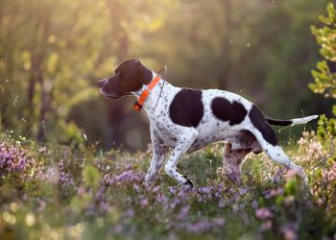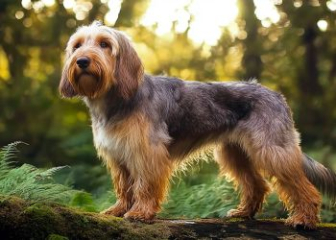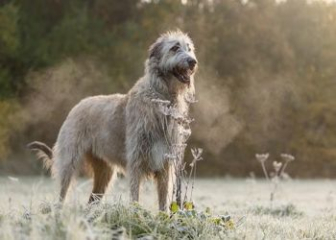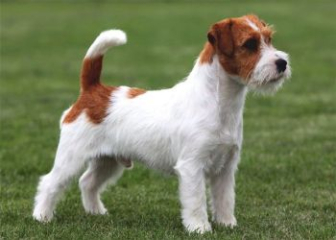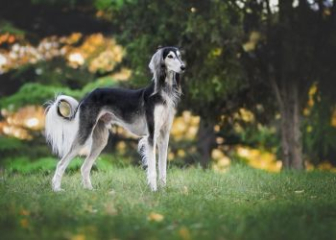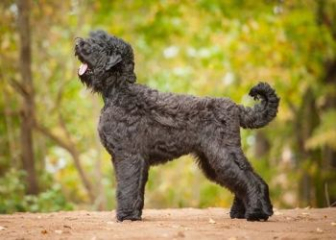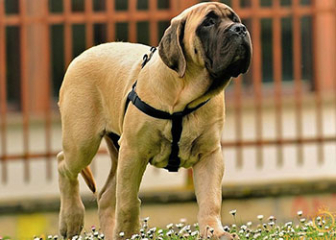Australian Shepherd – The Herding Dog with a Beautiful Coat
Blog | by
Australian Shepherd – Also Known as Berger Úc or Aussie, an Intelligent and Agile Herding Breed from the U.S.
The Australian Shepherd is a smart, fast, and hardworking herding dog. Despite its name, the breed was developed and refined in the United States, not Australia.
This medium-sized livestock dog is known for its sharp intelligence, boundless energy, and dedication to work. Australian Shepherds come in a variety of stunning coat colors, with the rare Merle pattern being the most iconic and eye-catching.
Let’s explore everything about this amazing Dog breed in the article below!
Where Did the Australian Shepherd Come From?
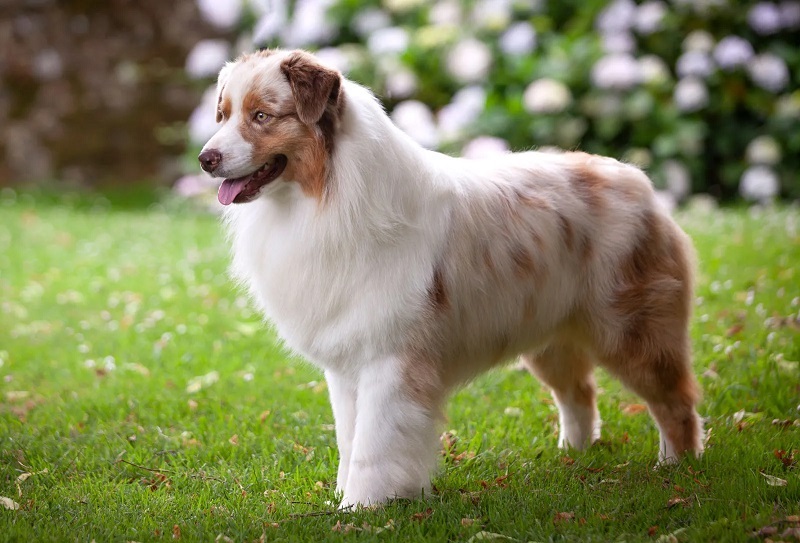
Australian Shepherd Originated in the United States
Despite its name, the Australian Shepherd actually originated in the United States, not Australia. Its ancestors were Basque herding dogs brought to the U.S. and Australia from Spain, known for their excellent livestock herding abilities and adaptability to harsh climates. The breed was later developed and refined in the U.S.
Breed Development Timeline:
-
19th Century: Spanish immigrants brought the ancestors of the Australian Shepherd to both the U.S. and Australia. In Australia, these dogs were crossbred with Collies, Border Collies, and Australian Kelpies.
-
Late 19th – Early 20th Century: The U.S. began importing herding dogs from Australia and selectively bred them to create a smart, fast, and reliable herding dog suited for American ranch work.
-
1957: The breed was recognized by the Australian Shepherd Club of America (ASCA).
-
1993: The American Kennel Club (AKC) officially recognized the Australian Shepherd as an official breed.
The name “Australian Shepherd” was given simply to distinguish it from other American herding breeds and has no direct link to its place of origin.
Appearance of the Australian Shepherd
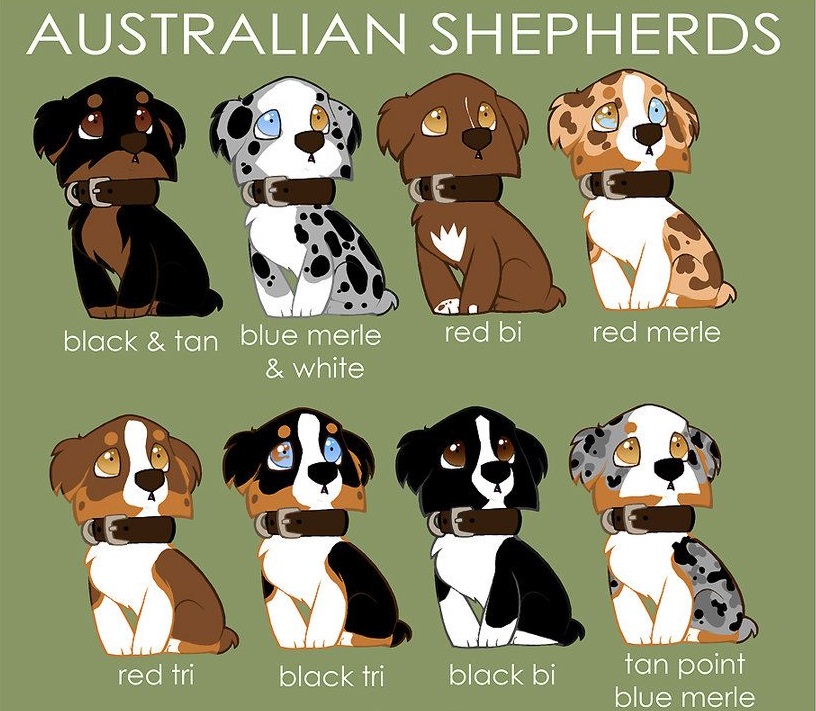
Coat Colors of the Australian Shepherd
The Australian Shepherd is a medium-sized herding dog with a well-balanced, muscular build and a stunning variety of coat colors. Let’s explore the physical characteristics of a purebred Australian Shepherd in more detail:
Physical Features of the Australian Shepherd
-
Height: Males 51–58 cm | Females: 46–53 cm (measured from paw to shoulder)
-
Weight: Males 25–32 kg | Females: 18–25 kg
-
Head: Slightly rounded and well-proportioned to the body
-
Muzzle: Medium length, slightly tapering toward the nose; nose color can be black or brown, depending on coat color
-
Nose: Black or brown
-
Ears: Medium-sized, triangular with slightly rounded tips, hanging down
-
Neck: Long with a slight arch
-
Chest: Broad and deep
-
Back: Straight and strong
-
Eyes: Almond-shaped, bright, and intelligent-looking; can be brown, blue, amber, or even two different colors (heterochromia)
-
Tail: Long and feathered, slightly curved—some may be naturally bobbed or docked
-
Coat: Medium-length double coat; outer coat is wavy, undercoat is thick and insulating
-
Coat Colors:
-
Black Tri-color
-
Blue Merle (mottled gray with black patches)
-
Red Tri-color
-
Red Merle (mottled reddish-brown with lighter tones)
-
-
Average Lifespan: 12–15 years
Note: Pure white is not an accepted or natural coat color for this breed.
Personality of the Australian Shepherd
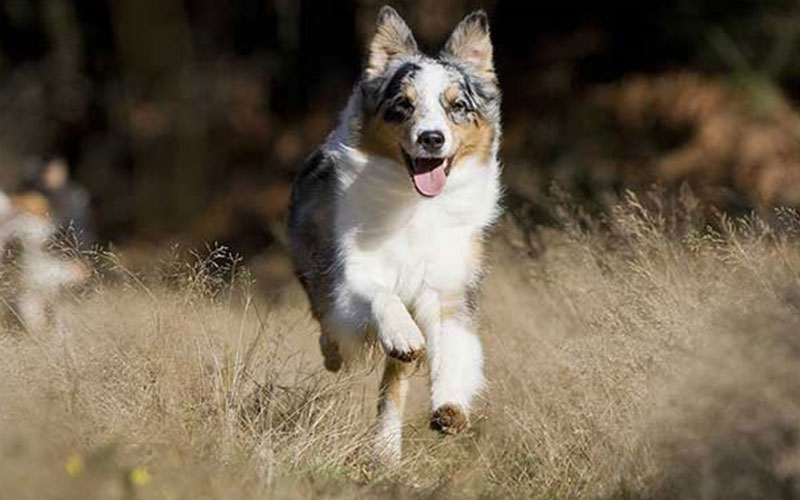
Australian Shepherd – Energetic and Always Ready to Run
The Australian Shepherd is a highly intelligent, loyal, and energetic breed. While it excels at herding livestock, it also makes an affectionate and playful family companion. Let’s take a deeper look at some of its most outstanding personality traits:
Intelligent and Easy to Train
Australian Shepherds rank among the Top 10 Smartest Dog Breeds in the World, right after breeds like the Border Collie, Poodle, and Golden Retriever. They are quick learners, able to understand and respond to commands easily, analyze situations, and even think independently. Some Aussies are said to have a “sixth sense” for understanding what their owners want.
Energetic and Full of Life
As a herding dog, the Aussie has endless energy and loves physical activity. These dogs can run and play all day long without tiring. They enjoy running, playing fetch, tug-of-war, and chasing games—making them perfect companions for active families or individuals.
Serious and Focused When Working
While friendly and affectionate at home, an Aussie becomes serious and even intense when it comes to working with livestock. It takes its herding job seriously and may even show signs of protectiveness. It loves to be given tasks and has a natural instinct to guard and manage a group, remaining alert around strangers.
Friendly with Children
Aussies are very responsive to human emotions, especially around children. They enjoy playing and interacting gently with energetic kids, always prioritizing their safety. They’re often described as playful, patient, and watchful guardians when around little ones.
How to Care for an Australian Shepherd
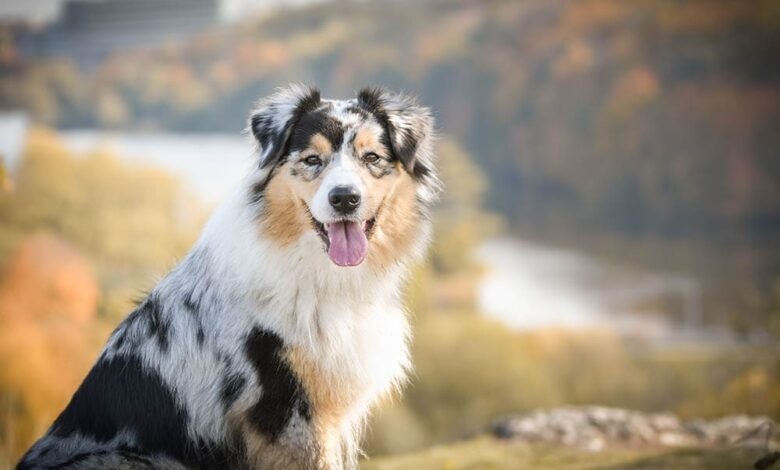
Australian Shepherds Require Specialized Care in Warm Climates
Originally bred in cooler, temperate regions of Europe and North America, Australian Shepherds can struggle with the hot and humid climate in countries like Vietnam. To help your Aussie stay healthy and happy, you’ll need to follow a carefully tailored routine. Here’s a detailed guide to proper care:
Balanced Diet for Australian Shepherds
To keep your Aussie fit, strong, and full of energy, make sure their diet includes all essential nutrients:
-
Protein: Found in chicken, pork, beef, fish, and eggs—builds and maintains strong muscles
-
Carbohydrates: Whole grains, brown rice, sweet potatoes—for quick energy
-
Fiber & Vitamins: Found in vegetables and fruits like apples, carrots, kale, and broccoli—supports digestion and immune system
-
Healthy Fats: Fish oil and animal fats keep the coat healthy and shiny
-
Calcium & Glucosamine: Use vet-recommended supplements to support joint health and bone strength
Exercise & Training Routine
Australian Shepherds have high energy levels and need daily physical and mental stimulation:
-
Daily walks or runs: 45–60 minutes minimum
-
Interactive play: Fetch, tug-of-war, obstacle courses, hide and seek
-
Obedience training: Teach commands like sit, stay, come, lie down, etc.
-
Early socialization: Helps them adapt to different environments and other animals
Grooming and Hygiene
Although Aussies don’t shed heavily year-round, they do have two major shedding seasons: spring and fall.
-
Brush daily during shedding seasons
-
Brush 2–3 times per week the rest of the year
-
Bathe only 1–2 times per month to avoid drying out the skin
-
Wipe face and eyes daily with a clean cloth
-
Brush teeth 3–4 times per week to prevent dental issues
-
Clean ears once a week to remove dirt and reduce infection risk
Ideal Living Conditions
Australian Shepherds thrive in spacious, cool, and active environments:
-
Must have room to run and play—not ideal for small apartments
-
Keep the living area cool, clean, and well-ventilated
-
Avoid leaving them alone for too long—they may develop anxiety or destructive behaviors
Health Care for Australian Shepherds
Regular vet visits and preventive care are key to a long, healthy life:
-
Vet checkups 1–2 times a year or as recommended
-
Full vaccination schedule: including core vaccines like 5-in-1, 7-in-1, and rabies
-
Deworming 1–2 times per year to support a healthy digestive system
Common Health Issues in Australian Shepherds

Australian Shepherd with a Merle Coat and Striking Blue Eyes
Below are some common and serious health conditions that affect the Australian Shepherd. Understanding the signs and knowing how to prevent and manage these illnesses will help keep your dog safe and healthy.
Double Merle Syndrome (Genetic Disorder)
The Merle coat is beautiful, but breeding two Merle-patterned dogs together can result in puppies with serious genetic defects.
-
Symptoms: Congenital deafness, partial or total blindness, very pale blue eyes, sluggish behavior, unresponsive to sound/light
-
Prevention: Never breed two Merle dogs together. There is no cure—only symptom management.
Eye Disorders
Australian Shepherds—especially those with Merle coloring—are genetically predisposed to several ocular diseases.
-
Common Issues:
-
Cataracts
-
Progressive Retinal Atrophy (PRA)
-
Entropion (eyelids rolling inward)
-
-
Symptoms: Red eyes, frequent rubbing, excessive tearing, poor vision or slow response to moving objects
-
Prevention & Treatment: Regular vet checkups and daily eye cleaning
Hip Dysplasia
A common issue in medium to large breeds like the Aussie.
-
Cause: Genetic
-
Symptoms: Limping, difficulty standing, weak hind legs, pain when touched near the hips
-
Prevention: Maintain a balanced diet, avoid obesity, and provide calcium, glucosamine, and omega-3 supplements
Epilepsy (Seizure Disorder)
Australian Shepherds are at high risk for genetic epilepsy, a potentially fatal condition if not treated properly.
-
Cause: Hereditary
-
Symptoms: Sudden tremors, muscle spasms, foaming at the mouth, seizures
-
Prevention & Treatment: Avoid overstimulating or stressing your dog. Regular vet visits and strict adherence to prescribed treatment plans are essential.
How Much Does an Australian Shepherd Cost in Vietnam?
Because the breed is still uncommon in Vietnam, prices are relatively high and vary depending on origin, pedigree, and appearance.
| Origin | Estimated Price | Details |
|---|---|---|
| Thai-imported, no paperwork | 15–20 million VND | No documentation; unclear lineage and health background |
| Imported from Australia, the U.S., or Europe | $1200–$2000 (~28–47 million VND) | Fully papered, 100% purebred, beautiful appearance, healthy |
| Champion Bloodline/Show Dogs | Up to $5000 (~117 million VND) | Top-tier in terms of pedigree, structure, and health |
Buying Tips for Australian Shepherds in Vietnam
-
Buy only from reputable pet shops or breeders to ensure authenticity and health
-
Inspect the dog’s physical condition, ask for vaccination records, and verify pedigree papers
-
Learn about the breed before purchasing—Aussies are active and high-maintenance, not ideal for everyone
Gallery: Beautiful Australian Shepherds
If you’re in love with this stunning breed, enjoy the collection of beautiful Aussie images we’ve compiled below. These photos show exactly why the Australian Shepherd is one of the most visually captivating and loyal companion dogs in the world!
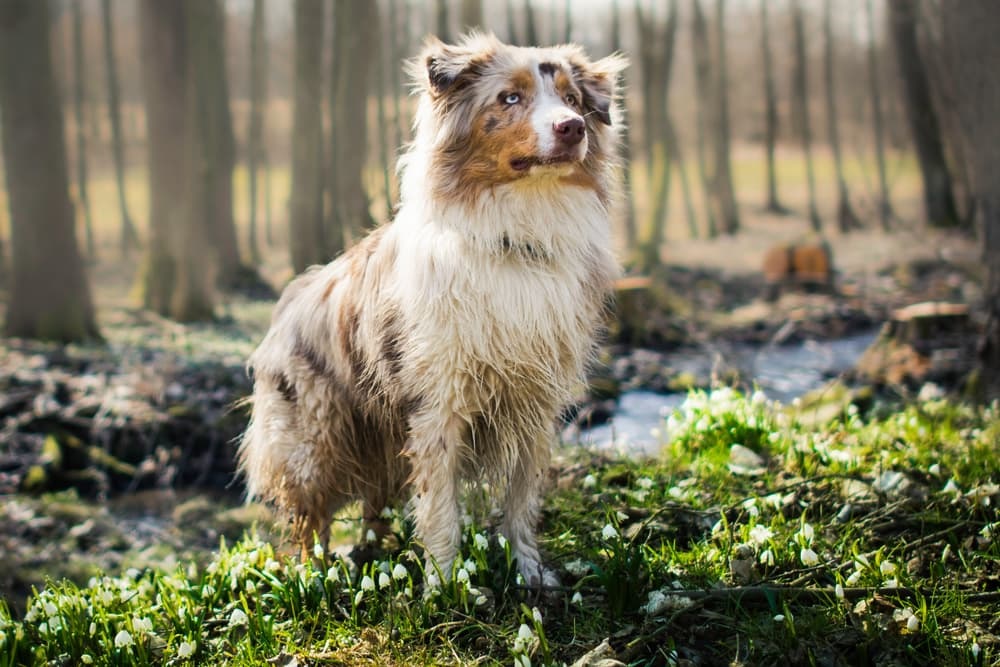
Australian Shepherd Covered in Dirt After a Playful Adventure
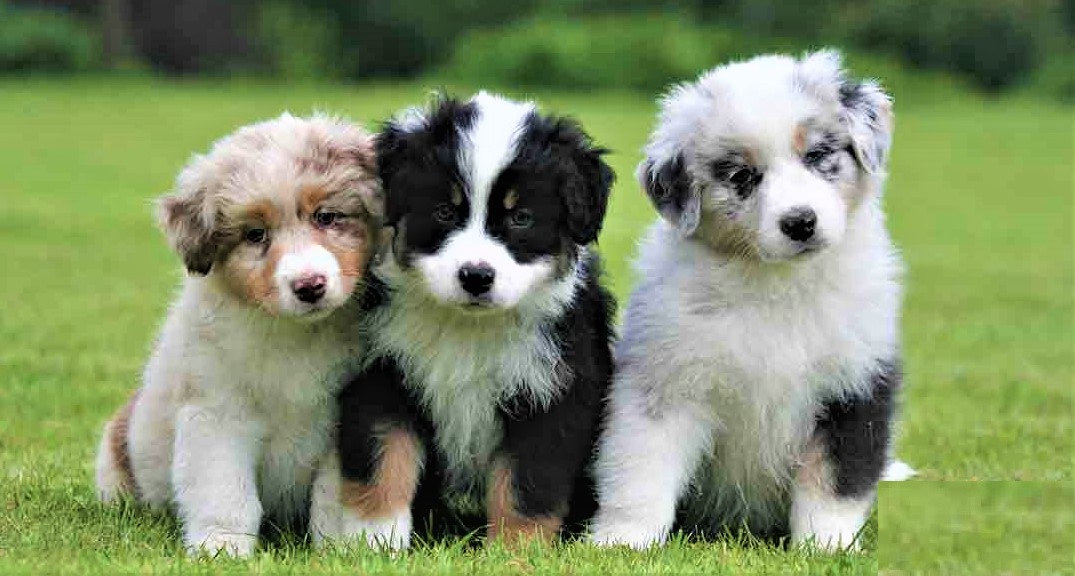
Three Adorable Australian Shepherd Puppies with Three Different Coat Colors

Purebred Australian Shepherd with a Stunning Red Coat

Australian Shepherd and Border Collie Showing Affection for Each Other
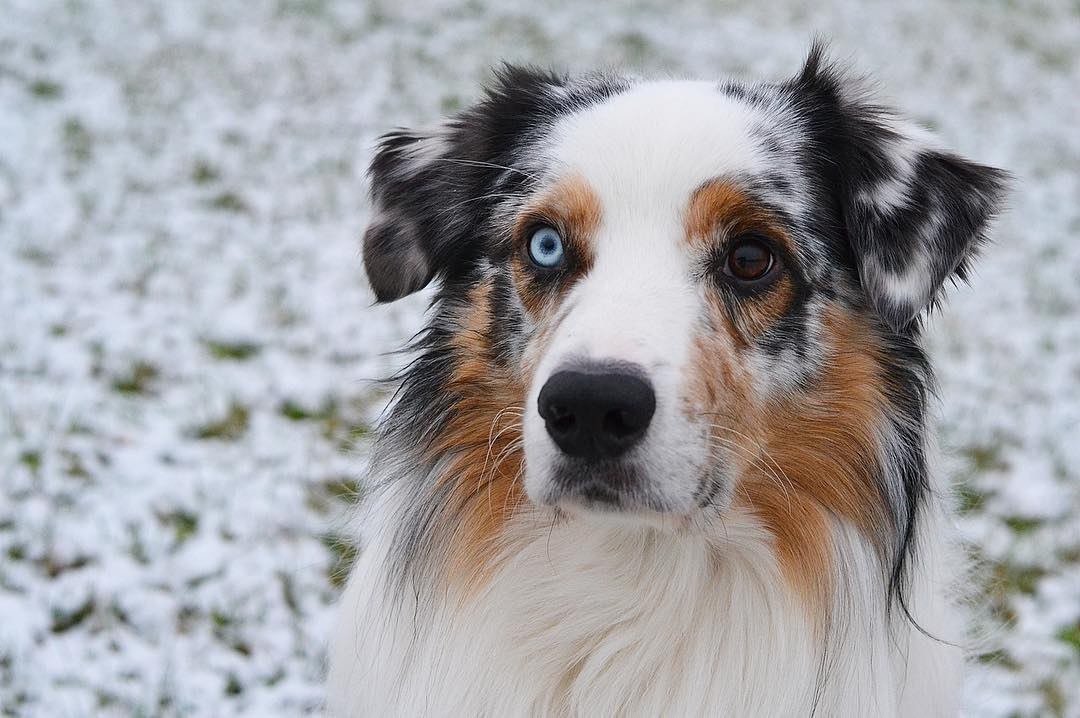
Australian Shepherd with Two Different Eye Colors
Through this article, dogbreed.wiki has shared with you everything you need to know about the Australian Shepherd, from A to Z. We hope this helped you learn more about this beautiful, intelligent, and energetic companion breed.
If you’re curious to discover more unique and adorable dog breeds, don’t forget to visit our Blog section and explore a world full of furry friends!

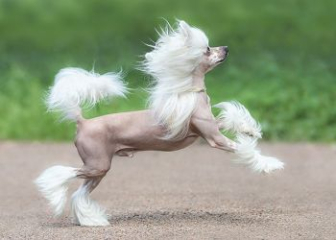
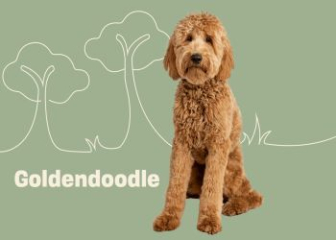
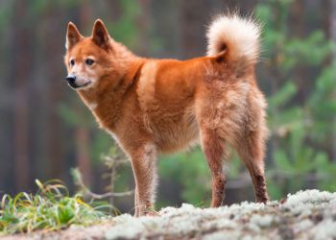

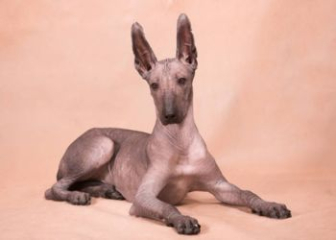
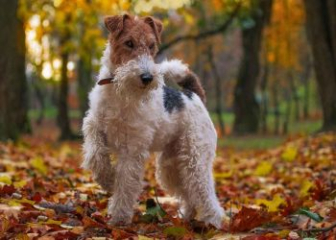


_350x250.jpg)

